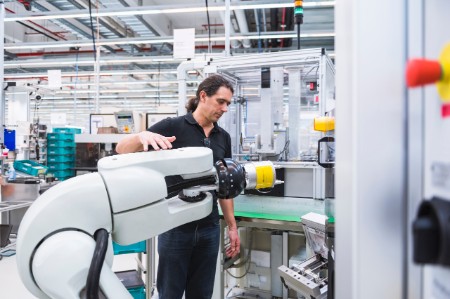Some scholars argue that the introduction of robots into the workplace will have a severely negative impact on employment, while others argue that, as with the industrial revolution, jobs will change in nature but humans will still find employment.
First, a couple of observations on what is truly different in this “revolution”:
- This is global — it is happening all over the world almost simultaneously.
- It will affect almost all sectors, not only manufacturing and basic service industries.
- It will affect not only blue-collar workers but also white-collar workers — and maybe even professional services, even lawyers.
- It is occurring with mind-boggling speed thus the real issue as to whether legislative change can really keep up, even if it wanted to.
- Everyone should be preparing for this revolution and productivity accelerator — survival of the fittest.
It is important to note that robots can function with almost all existing technology. This means that the onboarding of robots into the workplace can be achieved rather quickly and relatively inexpensively. Moreover, no computer knowledge is actually required to “teach” the robot its job.
From the HR legal professional’s perspective, it is essential to have our eyes wide open and be aware of the parts of the business that can be impacted, the positions and tasks, and be attentive to the preparatory steps to robotization, even if no one mentions the “R” word.
HR legal areas of concern
What are the challenges to robotization under existing laws? Are existing laws sufficient? What new legislation could potentially help ensure a peaceful and productive working relationship between humans and nonhumans? Can the legislative response adapt fast enough to the changing digitalized working world?
The issues to consider under existing laws that are relevant in the transition stage to robotics in the workplace include:
- Is collective bargaining with unions required?
- Are works council consultations required?
- Need one inform or obtain authorization from data protection agencies?
- Is health and safety consultation required?
- Is labor inspector authorization required?
- How should one manage employees’ privacy issues, for example, as robots detect inefficiencies in the workplace?
- Are there obligations to retrain impacted employees?
- What about us? Will robots do our jobs as HR lawyers?
An understanding of what artificial intelligence (AI) can do for lawyers in order to better organize and prepare for future challenges is necessary. One thing is certain: we have no choice but to embrace a new way of practicing law. Our clients will increasingly expect this, and survival of the fittest should be kept in mind. A request for proposal will be asking bidders to explain how AI will be used in the provision of legal services to keep costs down, increase productivity, shorten delivery time and lower the risk of human error.
In the area of HR legal services, we have significant opportunities to increase productivity while reducing risk at a potentially lower cost. Specifically, as to HR law, the human element, the combination of psychology, sociology, culture and law should ensure that human HR lawyers will remain relevant and employed for the foreseeable future.
Transformation of the workforce brought by technology and AI is inevitable and hard to predict. The actual impact of the digitalized workforce and the rules regulating them, and the scale and significance of the impact cannot be measured today. This revolution will fundamentally question not only human working models but also more broadly, business models.


